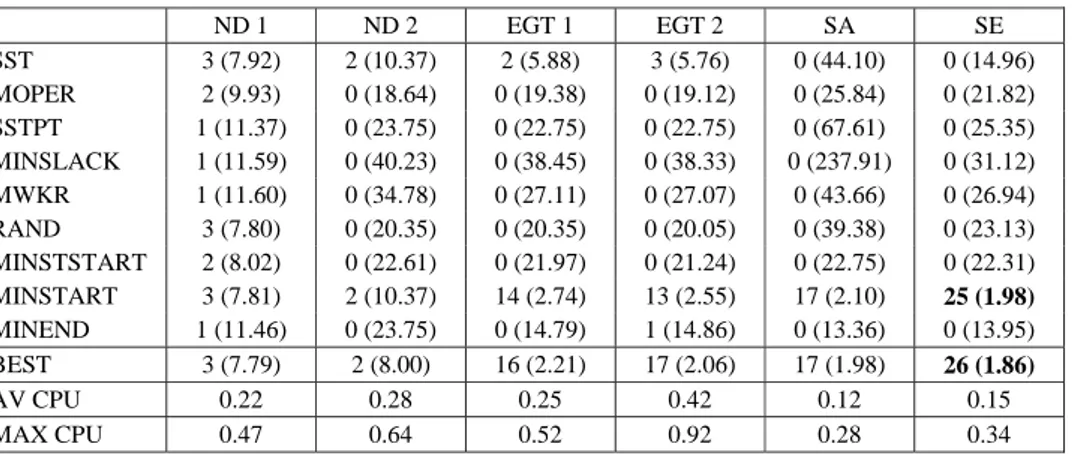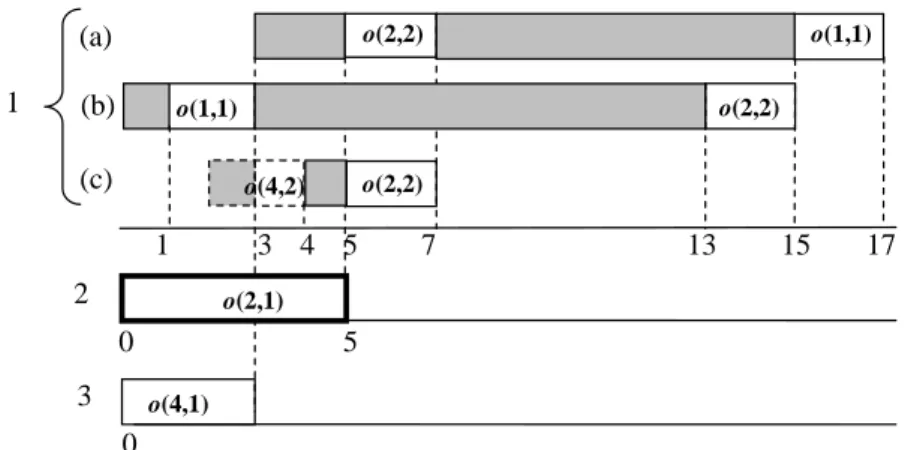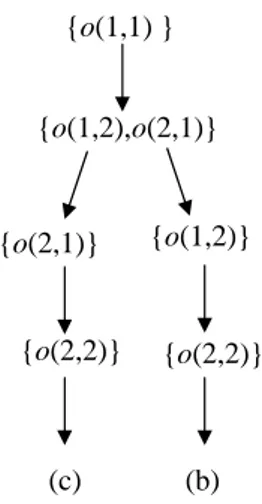Schedule generation schemes for the job-shop problem with sequence-dependent setup times: dominance properties and computational analysis
Texte intégral
Figure




Documents relatifs
This paper analyzes how the rotation of MDS embed- dings a ffects sparse regression models used to interpret them and proposes a method, called the Best Interpretable Rotation
More precisely, at each node of the search tree, we solve a robust Basic Cyclic Scheduling Problem (BCSP), which corresponds to the CJSP without resource constraints, using a
In the present work, we dealt with one of the many capacitated dynamic lot-sizing models, the Discrete Lot-sizing and Scheduling Problem or DLSP, and studied several variants of
Simple energetic considerations ( Kirk et al. 1995 ) have indicated that the production of gamma rays subsequent to the acceleration of high–energy particles could be detected
KEYWORDS: discrete lot-sizing and scheduling problem, sequence-dependent changerover costs, quadratic integer programming, semidefinite relaxation..
To adapt the instances from the literature to the studied problem, the missing data, such as the quantities of dishes, due dates of jobs, machine capacities, and time windows
For each instance, we give the best found lower (LB1) and upper (UB1) bounds, the total number of branch and bound nodes (#nodes), the total CPU time in seconds (CPU), the initial
Moreover, this idea can also be applied to track the evolu- tions of the state of an object.Similarly to the Execution Path Differences idea, we could offer the developer a smart




